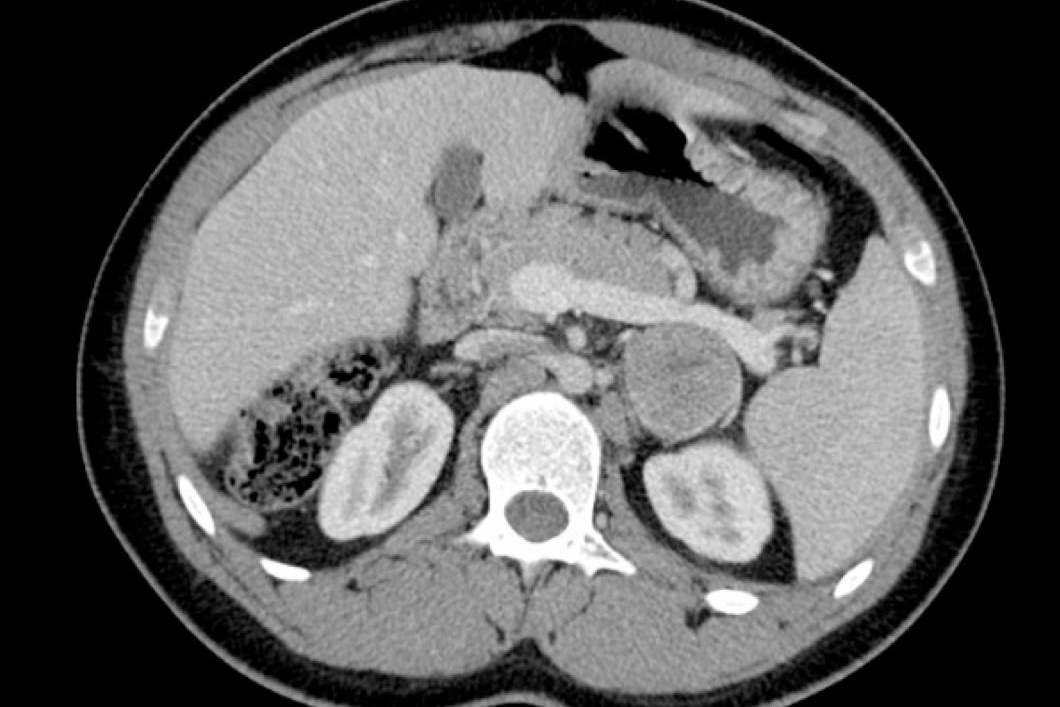
Tumours of the adrenal gland: when the oncological component joins the endocrine component
Adrenal gland tumours differ from other neoplasms in that the purely oncological component (adenomas and carcinomas) may be associated with an endocrine component (secreting or non-secreting tumours)
Tumours of the adrenal gland may originate from the cortex or medullary of the adrenal gland
Tumours originating from the adrenal cortex may secrete
- cortisol resulting in Cushing’s syndrome
- aldosterone resulting in Conn’s disease;
- sex steroids such as testosterone or oestrogen.
Finally, tumours arising from the adrenal medulla (pheochromocytoma) secrete catecholamines
For tumours of the adrenal cortex, the theory that benign and malignant tumours represent two etiologically distinct entities has been revised; it is now assumed that nodular hyperplasia, adenoma and carcinoma represent a continuum in the evolution of tumour development.
According to Knudson’s theory, a tumour develops after an initial series of genetic alterations (initiating event) followed by the growth of different cell groups.
Subsequently, the establishment of a second genetic alteration leads to the selection of the cell group with the best characteristics for growth (tumour progression) and thus to the uncontrolled growth of the neoplasm.
Benign lesions (hyperplastic nodule and/or adenoma) would represent the first phase and carcinomas the second phase of tumour development.
This hypothesis is supported, inter alia, by the fact that some oncogenes are already present in adenomas, albeit at a much lower level of expression than in carcinomas.
Cortisol-secreting tumours
Excess production of cortisol by the adrenal gland results in a condition known as Cushing’s syndrome.
Aldosterone-secreting tumours
Excess production of aldosterone by the adrenal gland results in the condition known as hyperaldosteronism.
If hyperaldosteronism is caused by an adenoma, we speak of Conn’s disease.
The diagnosis of primary hyperaldosteronism is of great importance as it is now believed that 5-10% of cases of arterial hypertension are sustained by this pathology.
Sex-hormone-secreting adrenal tumours
These tumours are very rare and should be suspected in the case of male precocious pseudopuberty, female pseudohermaphroditism or in the presence of signs of virilisation arising suddenly in an adult or advanced woman.
Adrenal tumours secreting oestrogen or progesterone are extremely rare.
Tumours of the adrenal medulla
As with tumours of the adrenal cortex, pheochromocytomas can only be clearly distinguished between benign and malignant forms on a histopathological basis.
Therefore, malignant pheochromocytomas are identified on the basis of local or distant invasiveness, either at the time of diagnosis or after a follow-up of at least three years.
In general, extrasurrenal pheochromocytomas, those of large size and those with necrotic areas within them are more likely to be malignant.
Read Also:
Emergency Live Even More…Live: Download The New Free App Of Your Newspaper For IOS And Android
Brain Tumours: Symptoms, Classification, Diagnosis And Treatment
What Is Percutaneous Thermoablation Of Tumours And How Does It Work?
Symptoms And Treatment For Hypothyroidism
Hyperthyroidism: Symptoms And Causes
Surgical Management Of The Failed Airway: A Guide To Precutaneous Cricothyrotomy
Thyroid Cancers: Types, Symptoms, Diagnosis
Lymphoma: 10 Alarm Bells Not To Be Underestimated
Non-Hodgkin’s Lymphoma: Symptoms, Diagnosis And Treatment Of A Heterogeneous Group Of Tumours
CAR-T: An Innovative Therapy For Lymphomas
Lymphangiomas And Lymphatic Malformations: What They Are, How To Treat Them
Lymphadenomegaly: What To Do In Case Of Enlarged Lymph Nodes
Swollen Lymph Nodes: What To Do?
Thyroid Nodule: Signs Not To Be Underestimated
Thyroid: 6 Things To Know To Get To Know It Better


